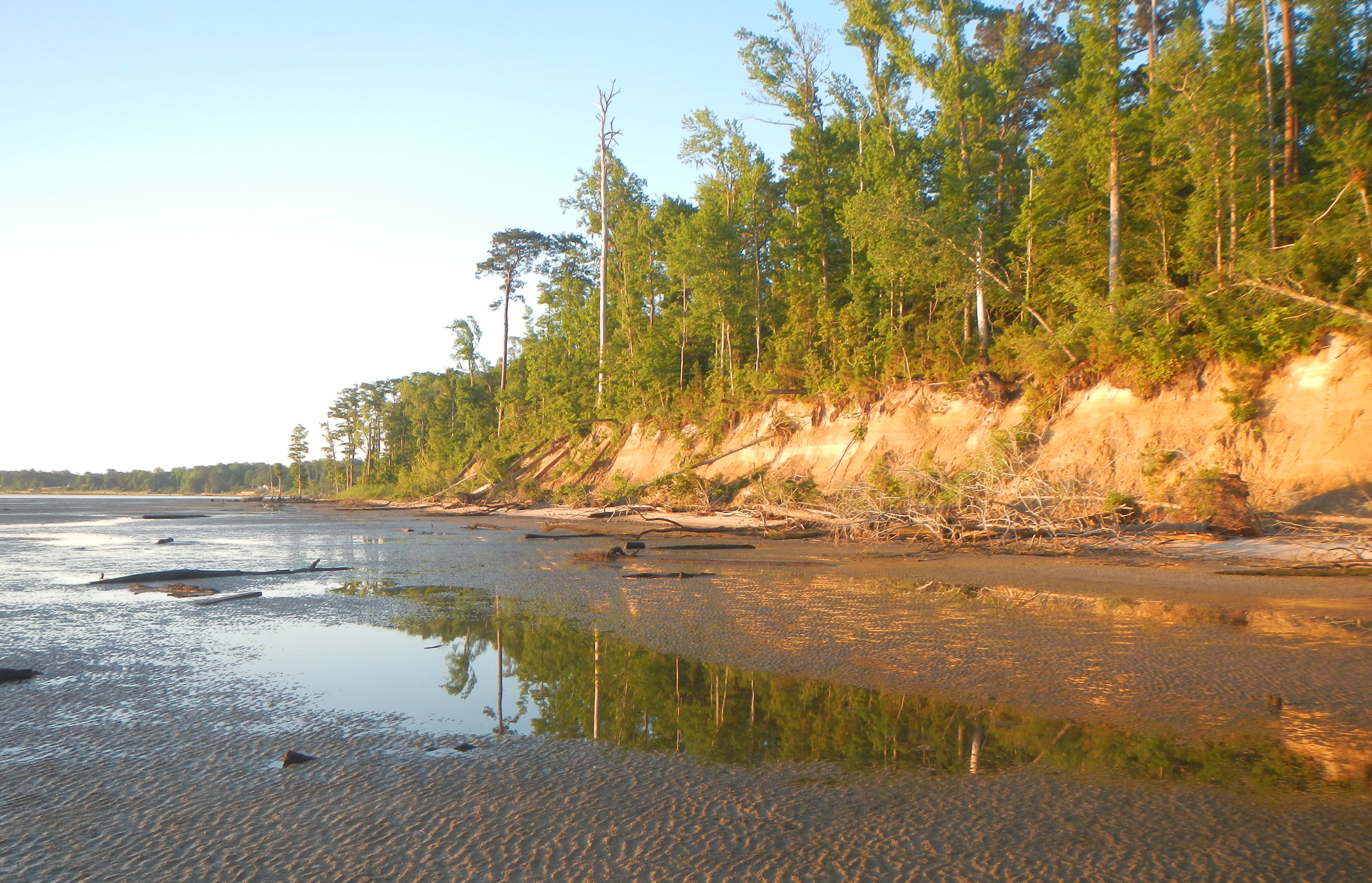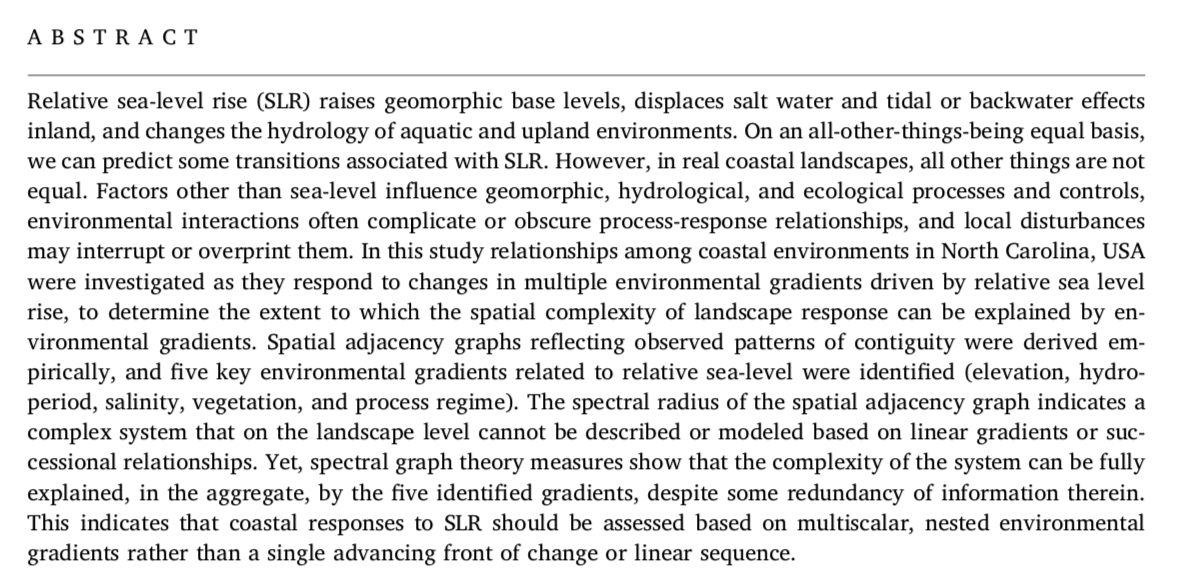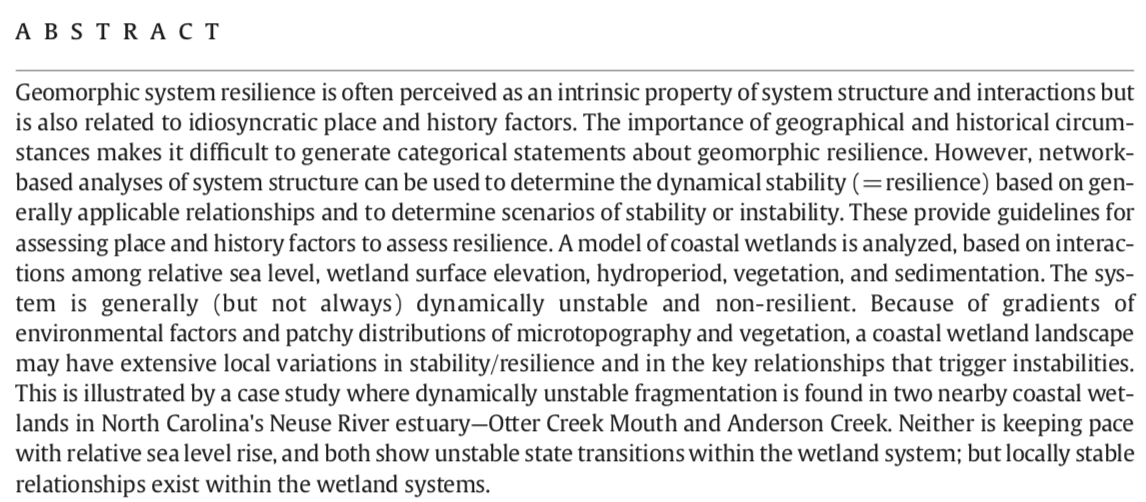As sea level rises--and it is rising!--it is causing geomorphological, hydrological, and ecological changes in coastal environments. Though "bathtub" models, which show where the shoreline would be with sea level increased by a certain amount, are useful in showing areas of potential impact, that's not how actual responses to sea level work. Not only does the ocean level change, but also the base level for rivers and terrestrial processes, salinity, ecological habitats, hydroperiods, and any number of other factors.

Sand and mud flats along the eroding Neuse River estuary shoreline, NC.
As sea level rises we can generally expect changes along environmental gradients (from, e.g., lower, wetter, and saltier to higher, drier, and fresher) as these gradients are translated inland. However, there are multiple gradients involved, and interactions between, e.g., water chemistry, hydrological, geomorphic, and ecological gradients. Furthermore, there are often nested levels of gradients. For example, the fluvially dominated freshwater to tidally dominated saltwater gradient along a coastal plain river will encompass a number of tributaries with the same gradient, which themselves may have tributaries with the same gradient, etc.
Thus, just as the effects of sea level rise are more complicated than simply filling a coastal bathtub, they are also more complicated than simple regional linear transitions of the type often featured in efforts to map vulnerability to sea level rise, sequence stratigraphy, and vegetation succession (to name a few examples).
But, at least if we consider multiple environmental gradients, and the presence of spatially nested gradients, can we still understand effects of sea level rise based on those gradients? That was the main question in my latest published article, Environmental gradients and complexity in coastal landscape response to sea level rise, published in Catena169: 107-118(you can also access it here).
The abstract, and the answer to the question above, is shown below.

This continues work I started a couple of years ago, returning to the coastal and coastal plain landscapes of eastern North Carolina, where I got my research start as a graduate student at East Carolina University (MA, 1982), and later with the Pamlico-Tar River Foundation of Washington, NC (1984-6), and as a faculty member at ECU (1988-1997).
Earlier this year, Coastal wetlands, sea level, and the dimensions of geomorphic resilience was published in Geomorphology 305: 173-184 (also here). That study, based on detailed analysis of a couple of small wetland sites, was concerned with whether the coastal wetlands in question are dynamically stable (= resilient) to rising sea-level.
The abstract is below:


Osprey nest, Slocum Creek, NC.
-----------------------------------------------------------
Posted 25 June 2018
